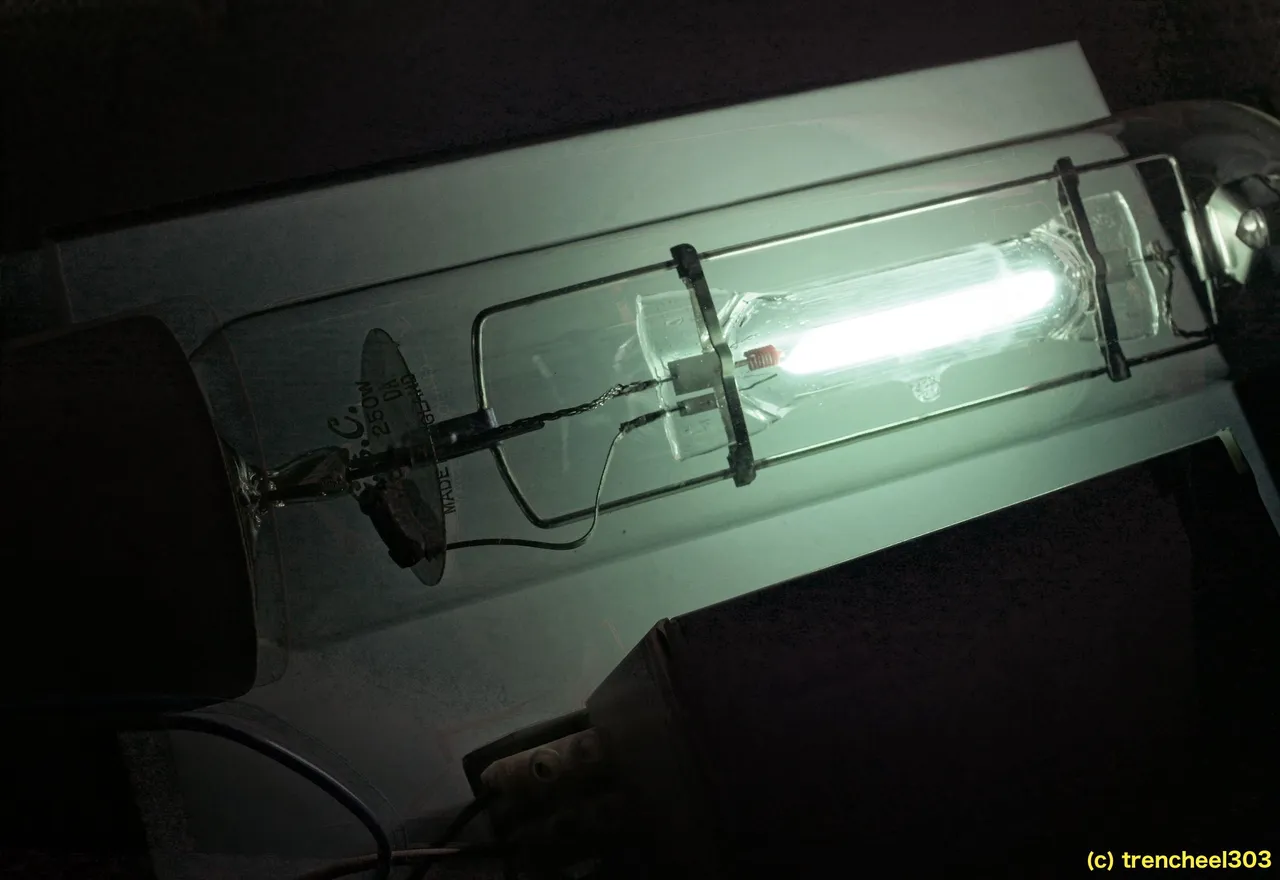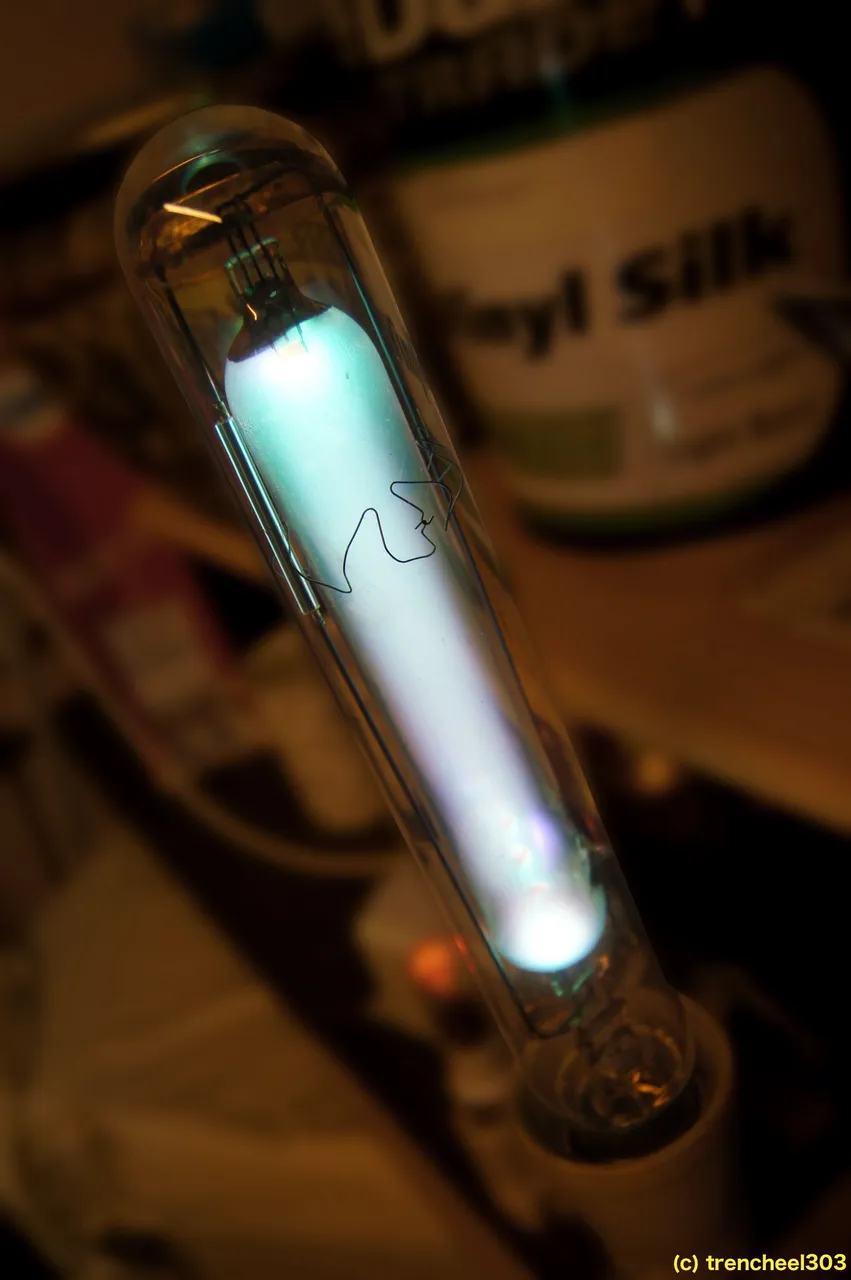
Something I also like to take photographs of are vintage lamps (known to the common man as "light bulbs" which is technically a misnomer!) in particular old mercury lamps. The principle is simple - an electric current is struck between two electrodes in a sealed tube with a (usually Argon) fill gas. The liquid mercury then vaporises into the arc stream and produces pure white light. There is no filament here, the light is emitted by the arc itself, which looks like a little lightning bolt. The lamp above was made by G.E.C. - the General Electric Company of England, which is since defunct. You can just about see their logo to the left of the tube, right where the mica disc is.

The second lamp is a medium pressure mercury, which uses a larger arc tube running at lower pressure than the first lamp. It's an older technology which was made obsolete by the high pressure lamps and it dates back around 80 years. These are considered cream of the crop to collectors; they are very hard to get hold of and not always in working condition. They had a short lifetime (as little as 3,000 hours, up to 9,000 in some cases) and could not be run in a horizontal position unless a magnetic arc deflector was installed in the light fitting.
Eventually, to improve efficiency and colour rendering, a phosphor was added to the outer bulb (which by this point had been changed to an elliptical shape) which gave the lamp a slightly warmer colour tone. Without the phosphor the light cast looks a blue-white colour, but humans look green and unwell under it.
Eventually, lamp development and improvements spawned a new type of mercury lamp called the metal halide lamp, which are more efficient and give better colour, but can succumb to a sudden end of life where the arc tube ruptures. Sodium lamp development was also happening in parallel, and in fact low pressure sodium lamps have been around as long as mercury lamps; they just didn't catch on until later. Eventually high pressure sodium lamps took the market from mercury and now it's a dying breed. Despite being relatively inefficient, mercury lamps do have one inherent advantage - they tend not to go off completely as a means of failure; instead they just gradually get dimmer.